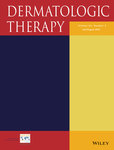The role of CD1a expression in the diagnosis of cutaneous leishmaniasis, its relationship with leishmania species and clinicopathological features
Abstract
Cutaneous leishmaniasis is caused by a flagellated protozoan transmitted by the bite of a female sandfly. The clinical and demographic details of this disease, predominantly affecting immunocompetent individuals, are recognized by the WHO as a Neglected Tropical Disease. We sought to determine the usability of CD1a immunohistochemical staining to detect amastigotes especially in cases where leishmaniasis is suspected but evident amastigotes could not observed. We also evaluated the relationship between CD1a expression and leishmania subtypes. A total of 84 cases diagnosed with leishmaniasis or suspected leishmania on histo-morphological evaluation of skin biopsies were included in the study. Amastigotes were easily detected in hematoxylin eosin in 18 of 84 cases. In 23 cases, amastigotes could not detect in hematoxylin eosin sections. The immunostains for CD1a are demonstrated amastigotes in 60 of 84 cases. However, a small number of amastigotes became visible by positive staining with CD1a in 43.4% of the cases in that amastigotes could not detected in hematoxylin eosin. A statistically significant correlation was found between amastigote amount in hematoxylin eosin and CD1a expression. In addition, a significant correlation was observed between CD1a expression, age and clinical pre-diagnosis of the cases. It was observed that amastigotes were easily detected in hematoxylin eosin in Leishmania Infantum / donovani positive cases in polymerase chain reaction (PCR), and at the same time, it was found that CD1a expression was significantly higher. Using histopathology examination with CD1a staining and/or PCR methods, a diagnosis of leishmaniasis can be established and early treatment initiated. This contributes to reduce transmission and prevalence.
CONFLICT OF INTEREST
The authors declare no potential conflict of interest.
Open Research
DATA AVAILABILITY STATEMENT
The data that support the findings of this study are available from the corresponding author, upon reasonable request.




